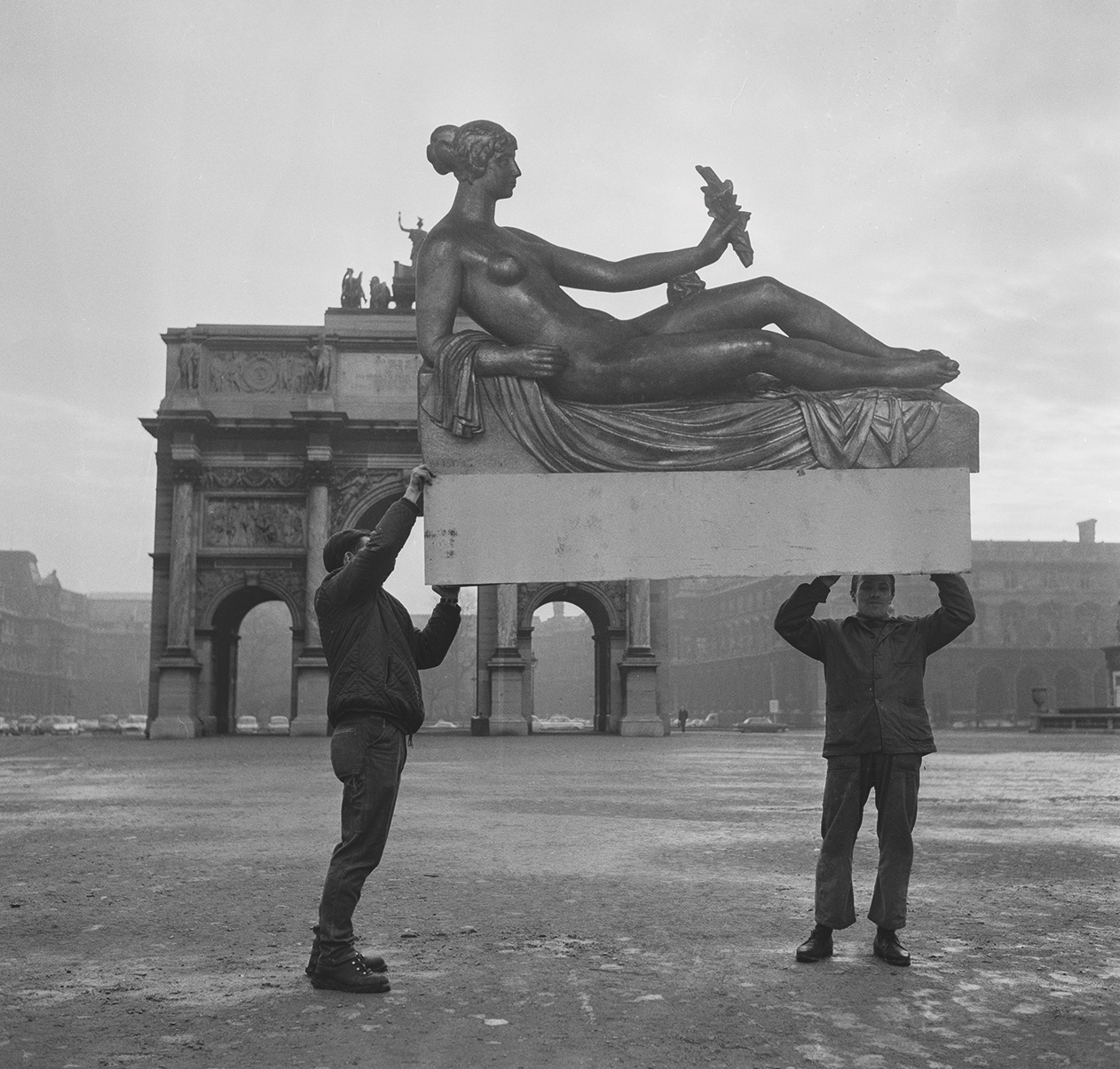En cours
A Venir
Billetterie
Collections en ligne
Actualités
Boutique
Restaurants et privatisation
02.04.22
Maillol in the Jardin du Carrousel
Since 1929, Maillol has been an integral part of the Tuileries Gardens. At that time, the Monument à Cézanne was installed there, between two flights of stairs near the Musée de l’Orangerie. Made of pink marble, a porous material that unfortunately suffers from the effects of time, the work is gradually deteriorating. In 1959, Dina Vierny, who had been involved in the defence of Maillol’s work since the post-war period, proposed that a lead version be cast from the sculpture in order to replace it and move the pink marble sculpture to the Musée d’Art Moderne in Paris, directed at the time by Jean Cassou who supported the project.

In order to speed up the process, which was dragging on, she requested a meeting with André Malraux, who said « You give me the work, I give you the Tuileries! ». As the space was too large, they decided to limit themselves to the Jardin du Carrousel and to decorate it with eighteen monumental works in bronze and lead. They chose three sculptures that had already been cast and were being kept at the Musée National d’Art Moderne, and the rest were donated by Dina Vierny and Lucien Maillol (the casting being at the State’s expense.) Dina Vierny coordinated and designed the entire installation, drawing on Maillol’s instructions on how to showcase the sculptures. She had life-size silhouettes made in order to plan this open-air Maillol museum as effectively as possible.

These sculptures by Maillol were not removed from the garden until the Grand-Louvre works initiated by François Mitterrand in 1981. The main part of this large-scale project consisted of enlarging the area dedicated to the museum, notably with the construction of the Great Pyramid, which transformed the majority of the gardens into wastelands and led to the removal of the statues. In 1990, Mitterrand launched a competition to rehabilitate the gardens. The landscape gardeners Pascal Cribier and Louis Benech won the competition and designed a Jardin du Carrousel adorned with large hedges within which the statues are hidden and revealed. The sculptures are due to leave once again in 2022 for a new campaign of work to modernise and readapt the garden.
The project
The Musée du Louvre has announced a new works project to restore the Jardin des Tuileries to its former glory at the end of 2020. The major project, estimated at 15 million euros, will begin with the revegetation of the main avenue, which has become increasingly bare over the years. This first phase consists of replanting 92 elm trees on each side of the avenue in order to make themit thicker and provide shade, reducing its width by half and thus restoring its sens of perspective. There will also be gradual repairs to some of the groves and facilities such as the fountains and benches. The main aim of this campaign is to make the open-air museum more pleasant and to revitalise the biodiversity of the green space.

Isabelle Glais, deputy director of gardens at the Louvre’s Architectural Heritage and Gardens Directorate, said that an improvement to the Jardin du Carrousel – designed to showcase the sculptures dedicated to Maillol – would be considered by 2023. In preparation for this work in the Jardin du Carrousel, four sculptures have already been moved out of the museum into the open air: Méditerranée, La Jeune Fille allongée, L’Été and L’Action Enchaînée. However, they will not wait for the end of the work in a storeroom. They will instead be presented at the Musée d’Orsay to fill the pedestals left empty by the sculptures that have been removed for the travelling retrospective dedicated to Maillol, taking place at Orsay, at the Kunsthaus in Zurich and then at La Piscine de Roubaix – Musée d’art et d’industrie André Diligent. At the end of the work, scheduled for the beginning of 2023, Maillol’s four bronzes will be able to return to their place in a garden even more beautiful than the one they left.
Nearly a hundred works by the artist, on loan from the Fondation Dina Vierny – Musée Maillol (sculptures, paintings, drawings, tapestries) will also be on display at the Musée d’Orsay, providing an opportunity to rediscover this sculptor whom André Malraux described as « the greatest outdoor sculptor ». There will also be a symposium dedicated to the artist, with a conference by Emmanuelle Heran entitled «Maillol at the Carrousel » which will look back at Dina Vierny’s enterprise supported by André Malraux.
Find out more about our current exhibtion : Andres Serrano. Portraits of America
DISCOVERMentions légales | CGU | Données personnelles | Gestion des cookies
Musée Maillol, 2021
Mentions légales | CGU | Données personnelles | Gestion des cookies
Musée Maillol, 2021